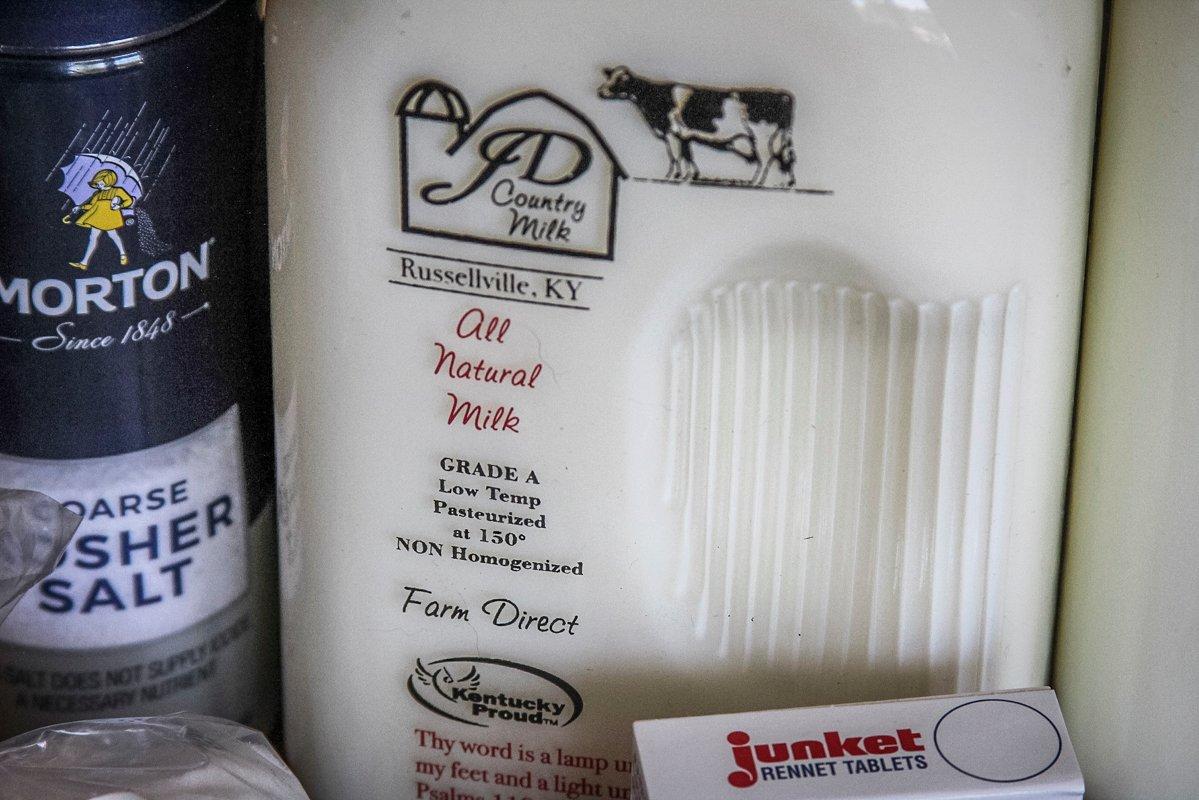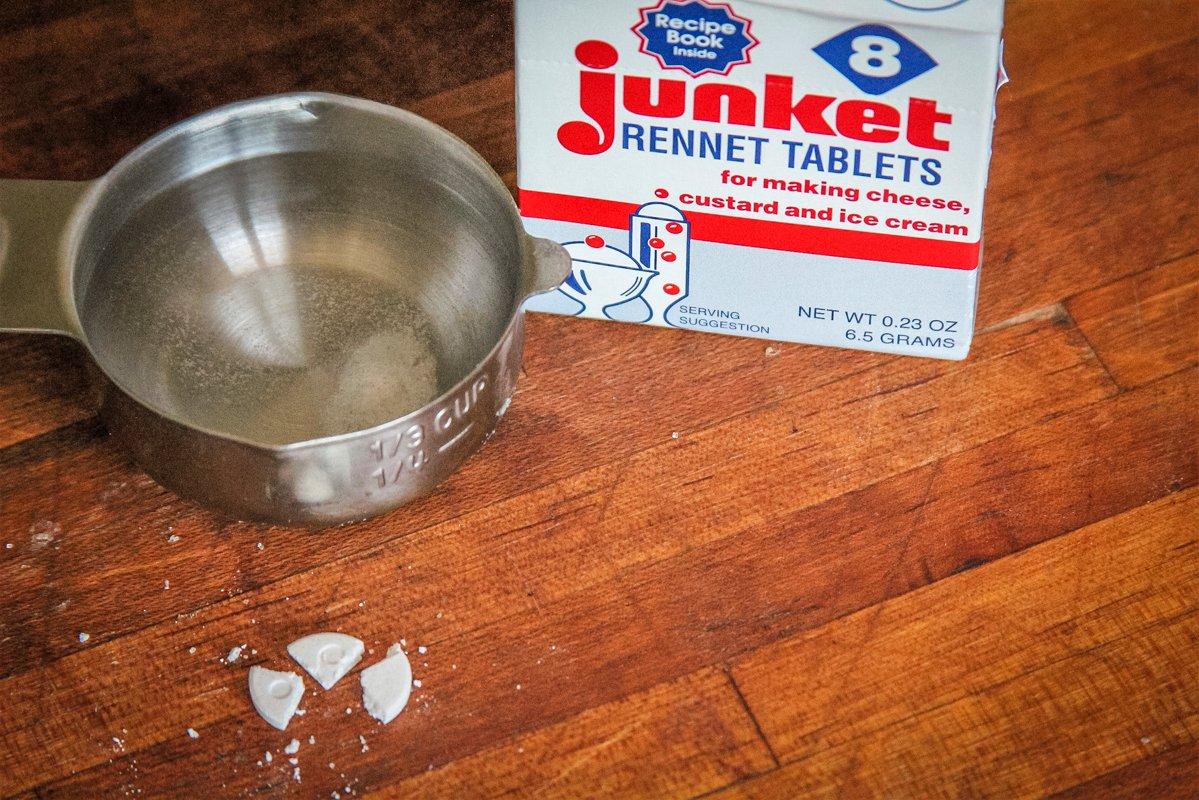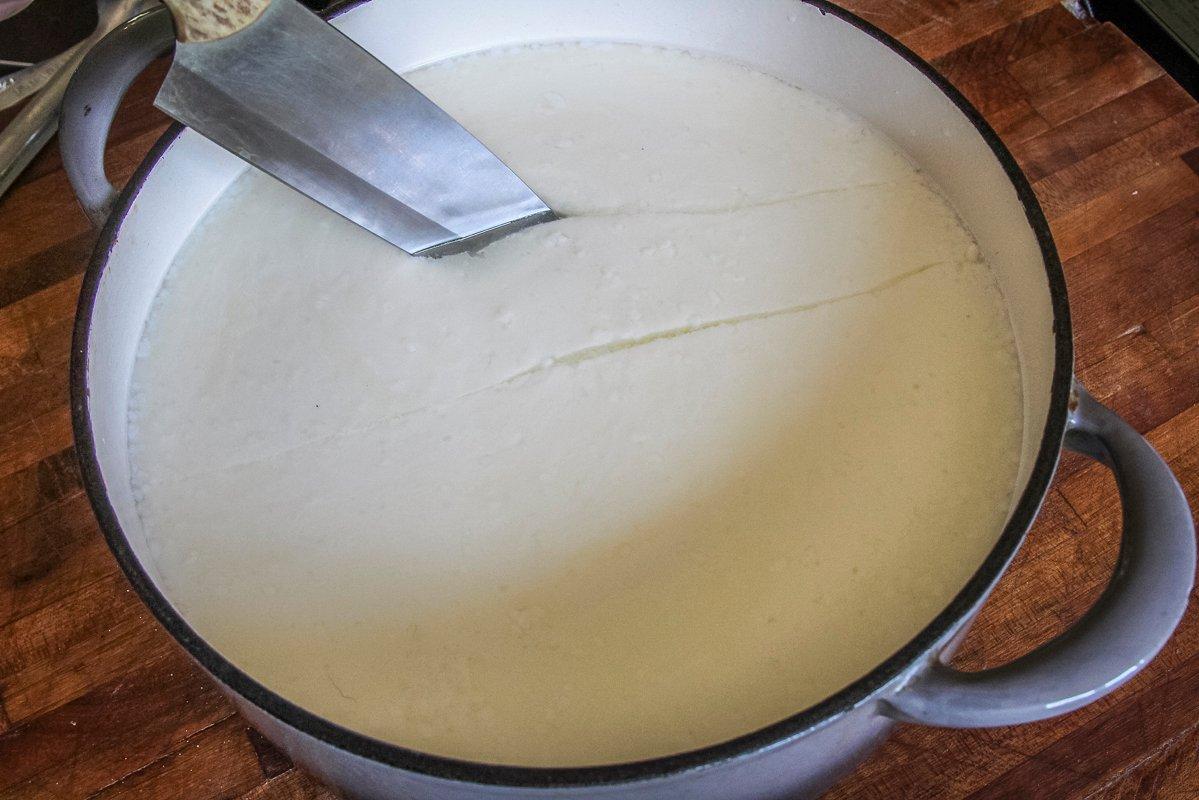Making your own mozzarella is easy, and it will be the best-tasting cheese you've ever added to a pizza.
Homemade Mozzarella Cheese Recipe
10 Min
Prep Time
60 Min
Cook Time
5
Servings
Medium
Difficulty
Ever think about making your own cheese at home? Craft cheesemaking is on the rise nationwide. One of the simplest to make is homemade mozzarella, and it's better than just about anything you can buy at the grocery.
Homemade mozzarella shreds easily, slices well for pizzas and casseroles, and melts beautifully. The flavor is more pronounced than commercially made cheese, and the texture is much softer than what you get from a bag.
The great thing about this quick mozzarella is it only takes about 30 minutes to make, and you can find everything you need at most grocery stores. The citric acid and the Rennet tablets will be in the canning-supply section. There are also a number of cheese-making supply companies that will deliver your supplies to your door.
One of the most important ingredients of cheesemaking is high-quality milk. The closer to the cow the better. Since this country's government seems to be hung up on keeping farmers from selling fresh milk directly to the consumer, your best bet is a low-temperature pasteurized, non-homogenized milk from a local source. We use JD Country Milk from Russellville, Kentucky. It gets pasteurized at temperatures lower than 150 degrees, so the active milk enzymes are still alive. Since this is a fairly forgiving cheese style to make, you can probably get by with a gallon of regular whole milk from the grocery, but make sure it doesn't say ultra-pasteurized on the label, since the temperature required for that is hot enough to kill the needed enzymes.
Everything else you need for this recipe is probably already in your kitchen. Cleanliness is important in cheesemaking, so make sure everything gets a thorough scrubbing before you begin, including work surfaces.
You will need:
A large pot; stainless-steel or enameled cast iron work well
Accurate thermometer
Knife to cut curds
Spoon or ladle to stir curds
Large colander
Large bowl
Measuring cup and spoons
Cheese cloth
Ingredients
1 Gallon of fresh or low temperature pasteurized (and non-homogenized if possible) whole milk
1 1/2 tsp Citric Acid dissolved in 1 cup non-chlorinated water
1/4 Rennet Tablet or 1/4 tsp Single Strength Liquid Rennet dissolved in non-chlorinated water
1 Tablespoon Cheese Salt or any non-iodized salt like Kosher (adjust to your taste)
Cooking Instructions
Step 1: Clean your work surface well. An anti-bacterial or bleach-based kitchen cleaner is perfect.
Step 2: Break one of the Rennet tablets into quarters (they should come already scored for easy breaking). Dissolve it in 1/4 cup non-chlorinated water. Add 1 1/2 teaspoons of citric acid to 1 cup non-chlorinated water. Stir to dissolve.
Step 3: Pour cold milk into pot with no heat. Add the dissolved citric acid and stir well to blend.
Step 4: Begin to heat the milk at medium temperature until it reaches 90 to 95 degrees. Use your thermometer to constantly monitor the milk's temperature.
Step 5: At 90 to 95°F, remove the pot from the burner and slowly add your dissolved rennet to the milk. Stir in a top to bottom motion for about 30 seconds, then stop.
Cover the pot and leave undisturbed for 5 minutes.
Check the curd after 5 minutes. It should look like a custard, with a clear separation between the curds and whey. If the curd is too soft or the whey is milky, let it sit longer, up to 30 additional minutes.
Step 6: The curd should have formed a solid layer by this point. Use a sharp knife to cut the curds into a 2-inch checkerboard pattern.
Place the pot back on the stove and heat to 110°F while slowly stirring the curds with your ladle. Again, watch your thermometer closely and move the pot off the heat at 110 degrees.
Take the pot off the burner and continue stirring slowly for 2 to 5 minutes. More time will make a firmer cheese. I normally stir for 3 to 4 minutes.
Step 7: Place the colander in a large bowl, and use a slotted spoon or a mesh strainer to remove the curds from the pot and transfer them to the colander. Allow the whey to drain into the bowl. Add half the salt to the cheese at this point. Gently folding the cheese a time or two will speed the draining process.
Step 8: While the curd drains, heat the leftover whey to 175 degrees. Use a sharp knife to cut the ball of cheese in the colander into 1- to 2-inch pieces. Submerge the colander into the 175-degree water and begin to work and stretch the cheese pieces. If you haven't spent a great deal of time handling hot pots and liquids, a pair of nitrile gloves will help you withstand the heat.
Lift the colander and place it back in the bowl. Work the cheese with your fingers, stretching and pulling the pieces until they begin to come back together. Move the cheese back and forth from the bowl to the hot whey two to three times, working the cheese ball for a few minutes each time you remove it from the whey. Allow the excess whey to drain completely from the cheese. Add the salt.
Once the cheese begins to pull like taffy and take on a shiny surface appearance, the mozzarella is just about ready.
Pinch off a small bite and check for salt level. If it needs additional salt, add it now. Continue working the cheese into a round ball.
Step 9: Drop the ball of mozzarella into a bowl of ice water to chill. Once it has cooled and set in shape, you can eat it as is or refrigerate for later use. You can slice or shred the mozzarella as needed for recipes. It should keep for up to two weeks if wrapped in plastic and refrigerated.

















